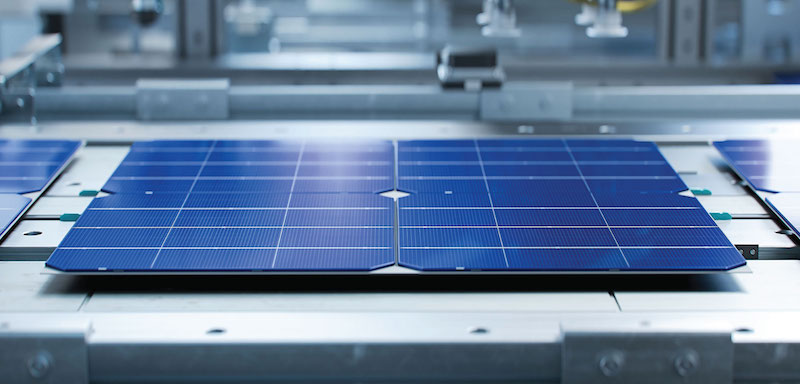Artificial intelligence and machine learning have completely transformed the very nature of modern industrial manufacturing. Smart digital factories utilize smart technologies to make factories more efficient, less wasteful, and optimized production lines. AI-enabled automation, online forecasting, and analytics can improve productivity while minimizing operating costs. In this article, we will discuss the role of machine learning in the future of manufacturing and in optimizing production lines.
The scope of AI in new-age manufacturing
AI transforms the manufacturing sector into a highly precise factory with low levels of human intervention. Some of the aspects of manufacturing in which AI could drive improvements include
1. Automation and Robotics
- AI robots perform repetitive operations with extremely high precision to decrease errors and increase the speed of production.
- Autonomous guided vehicles greatly facilitate and simplify the handling and transportation of different materials around factories.
- Collaborative robots work with the same human operator as a co-worker to further improve productivity and safety.
2. Predictive Maintenance
- Machine learning models analyze the data of the equipment to predict potential failures before they occur.
- A decrease in downtime, increased lifespan of machinery, and reduced maintenance costs is this approach.
- The scheduling of maintenance would be optimized with AI, thus eliminating unnecessary servicing and improving the operating efficiency.
3. Quality Control and Inspection
- The detection of defects is more precise with the application of AI-based vision systems than with those from humans.
- These have ensured continued quality monitoring and verification of adherence to the industry standards.
- AI models trained on such data from inspections will keep on learning to improve their capability to detect defects over time.
Also Read: Nanotechnology in Food: The Next Revolution in Edible Innovation
4. Supply Chain Optimization
- AI algorithms digest the market demand and discover optimum inventory levels.
- Real-time data processing value from lowering lead times improves supply chain effectiveness.
- AI logistics planning ensures that scheduled deliveries are maximized while transportation costs are minimized.
5. Energy Efficiency
- AI can monitor and modify energy consumption instantly, thereby saving costs.
- Intelligent energy management uses a smart grid optimized for power use.
- AI can be an anticipator of peak energy demand and optimize the working of the factory so that electricity costs are low.
Machine Learning in Production Line Optimization
Machine learning plays a vital role in purifying production processes thanks to actionable insights based on very large amounts of data. Below are some of how ML optimizes production lines:
1. Creation of Real-Time Process Optimization
With EP identifies parameters where performance is optimized. Machine learning algorithms process production data to reveal inefficiencies and how they could be improved. The parameters adjusted are those such as speed, temperature, and pressure for maintaining optimum performance. AI simulations can also be applied to run a few test runs and continually refine production strategies before release into production.
2. Detection of Anomaly
In artificial intelligence, deviations from standard operation procedures are detected and corrected in real time before causing defects, thus rendering quality consistent while minimizing waste and assuring the reliability of the product. Such advanced anomaly detection systems use deep learning models to identify even the tiniest variations in production processes.
Also Read: Cloud Kitchens: The Secret to Running a Successful Food Business with Low Investment
3. Demand Prediction
The machine learning models analyze historical data along with market trends to predict future customer demand. This, in turn, enables the manufacturers to better organize production operations while minimizing the wastage and shortage of stock. Forecasting models based on AI can be adapted to the changed market conditions, thereby improving their efficacy and responsiveness to a manufacturing setup.
4. Dynamic Scheduling
Standard scheduling methods are quite rigid and inefficient compared to the new-age scheduling tools of AI. Scheduling with AI maintains a current view of production and makes real-time adjustments to plans for maximization of resource efficiency and reduction of idle time. AI can also further optimize the physical allocation of human resources in determining which persons best fit which tasks for the most efficient allocation.
5. Human-Machine Cooperation
AI does not replace human work; it instead augments worker productivity when performing highly complex tasks. The process of augmented reality (AR) and AI assistants offers real-time guidance to eliminate errors and enhance efficiency. Wearable AI devices can give immediate solutions for troubleshooting purposes, as well as performance analysis for operators.
Case Studies of AI-Powered Factories and Machine Learning
Some of the world’s most prominent manufacturers have employed and implemented AI in optimizing production lines. Here are some of the mentions worth noting:
Also Read: Import US Tariffs & Strategies for Indian Exporters
- Smart Factories by Siemens
Siemens has Integrated AI and IoT in production facilities to meet the real-time monitoring and predictive maintenance of these production facilities. AI automation to reduce machine downtime and enhance quality control has resulted in improved operational efficiencies for the company. The company also uses digital twins, which are virtual copies of the physical assets, to optimize production processes.
- AI-based manufacturing by Tesla
AI robots and machine learning algorithms perform the task of optimizing production in Gigafactories. Battery production, assembly line, and quality inspections are being optimized through AI, resulting in shortened production cycles, lower costs, and shorter production time, and, most significantly, real-time data from AI systems of the company are being reviewed to enhance vehicle assembly efficiency.
- GE’s Predictive Maintenance
The AI works by providing predictive maintenance, monitoring the industrial equipment in GE’s factories. Expecting the unexpected failures to come through sensor data collection improved the reliability and efficiency of the machines. AI analytics from GE helps track maintenance costs against equipment life.
Challenges and Future Trends
AI in manufacturing presents its share of challenges despite the benefits that it brings. Some of these challenges include:
- Initial Costs: Setting up an AI system for deployment and integration into any organization is capital-intensive.
- Skill Gaps: Workers will need to be trained to operate and interact with AI-powered machines.
- Data Security: With AI depending upon the data it consumes, it therefore sets an avenue to all kinds of risks to cybersecurity.
- Integration with Legacy Systems: Most factories that still exist today use very old equipment that may not be able to work well with AI technologies.
Future Trends in AI-Powered Manufacturing:
1. Edge AI for Faster Decision-Making
AI models running on edge devices will enable real-time processing and reduced dependency on cloud computing.
2. Manufacturing Personalized Products by AI
Manufacturers will use AI to tailor products for customers with smart production lines.
3. Energy Efficient AI
In the areas of green manufacturing, it will be a strategic partner for energy performance optimization and waste minimization.
4. AI-Powered Autonomous Factories
The landscape of manufacturing will be transformed by the AI-led, fully automated factory with robotics and self-learning systems.
5. 5G-Enabled AI Solutions
5G technology will empower AI activities in manufacturing with ultra-fast data transfer rates and low latency processing.
Concluding Thoughts
AI factories are redefining eras in manufacturing through production lines, reducing costs, and increasing efficiency. Machine learning gives predictive maintenance, quality control, and real-time process optimization, making manufacturing facilities intelligent and agile. With the growth of AI, its influence in the manufacturing realm would strengthen even more, thereby ushering in an era of intelligent automated industry production and sustainable subsistence underneath. Companies transitioning to an AI-based manufacturing model would have a distinct competitive edge in an increasingly digitally automated world.























